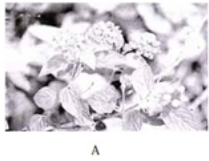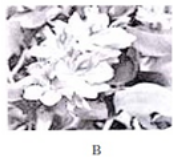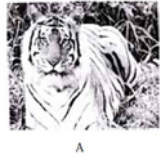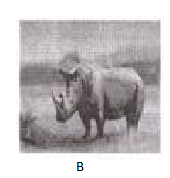From macromolecules to biomes, tremendous diversity is exhibited in our biosphere not only at the level of species but also at the various levels of biological organizations. The term ‘biodiversity’ was popularized by Edward Wilson to describe the combined diversity at all levels. The most significant among them are – Genetic diversity, species diversity and ecological diversity. Biodiversity on earth is essential for the survival of mankind and its conservation, the need of the hour.
Given below are the questions on Biodiversity and Conservation Class 12 along with the detailed explanations for reference.
Very Short Answer Type Questions
Q.1. What features make a community stable?
A.1. The following characteristics make a community stable:
-
Resistance to infrequent disturbances
-
Lesser variation in productivity from year to year
-
Impedance to invasions by alien species
Q.2. In the past, which factor would have caused a mass extinction of species?
A.2. As per scientists, the following would have triggered the mass extinction:
-
Temperature fluctuation
-
Meteorite/Asteroid hitting the planet
-
Emission of lethal hydrogen sulphide from the sea
-
The outburst of gamma radiations/supernova/Nova
-
Plate tectonics
Q.3. What is the reason behind the vast diversity in Indian ecology?
A.3. It can be attributed to the geographical diversity in terms of differing topography such as rain forests, deserts, coral reefs etc, thereby resulting in different varieties of ecosystems with diversity.
Q.4. Name an artificial ecosystem with high productivity.
A.4. Agricultural field of wheat or paddy
Q.5. In the IUCN Red List(2004), what does ‘Red’ represent?
A.5. It is used to refer to the taxa with the highest risk of extinction.
Q.6. How can the prevailing rate of species extinction be declined by 30% solely through the protection of biodiversity hotspots?
A.6. Hotspots are species-rich, precisely those under human threat hence protecting them can significantly decrease the rate of extinction. They can be preserved as sanctuaries and national parks.
Q.7. State a difference between endemic and exotic species.
A.7. Exotic species are derived into a geographical area from another geographical area whereas endemic species are native species restricted to a particular geographical area.
Q.8. Differentiate between species diversity and ecological diversity.
A.8. The distribution and number of species in an area are referred to as species diversity whereas ecological diversity describes the diversity at the ecosystem level.
Q.9. What is the significance of genetic variation in the Rauwolfia vomitoria plant?
A.9. This plant is a source of drug reserpine which serves as a tranquillizer. Its genetic variation can be in terms of the concentration of resperin and potency produced by the plant.
Q.10. Define the Red Data Book.
A.10. It is a collection of records or data of species with the risk of extinction maintained by the IUCN.
Q.11. What is a gene pool?
A.11. In a breeding population, it refers to the sum total of all the genes of every individual.
Q.12. What do you mean by ‘Frugivorous’?
A.12. It is used to refer to fruit-eating animals.
Q.13. Expand IUCN.
A.13. International Union for Conservation of Nature and Natural Resources.
Q.14. What is a) Bioprospecting b)Endemism
A.14. a) It is used to illustrate the process of discovery and commercialization of new products basis the biological resources. b) Endemism attributes to the species that are unique to a specific region only. They are not found anywhere else.
Q.15. Write the common feature between species A and B.


A.15. Both the plants are angiospermic flowering plants.
Q.16. Write the common feature between species A and B


A.16. Both animals are preserved in their natural habitats.
Q.17. What is a biodiversity hotspot?
A.17. A biodiversity hotspot is a biogeographic region with a large amount of biodiversity that is threatened by human habitation.
Short Answer Type Questions
Q.1. State how the current occurrence of species extinction is different from the earlier mass extinction.
A.1. Species extinction in earlier times occurred due to natural calamities such as volcanic eruptions, landslides, floods etc. while in the present times, the cause of species extinction is human activities.
Q.2. Which of the following according to you is the major cause for loss of biodiversity amongst the four main causes of loss of biodiversity ( Habitat loss and fragmentation, alien species invasion, over-exploitation and co-extinctions)? Justify your pick.
A.2. Habitat loss and fragmentation. As it is caused by clearing and over-exploitation of forest land for urbanization and industrialization purposes. Overpopulation has destroyed forests and burdened forest resources. Larger habitats are split into smaller fragments causing birds and mammals to migrate in quest of larger territories thereby resulting in population declination.
Q.3. How can the loss of one species lead to the extinction of another?
A.3. It can be explained via co-extinction, where the extinction of two mutually interrelated species takes place. For instance, the extinction of host fish causes the extinction of all parasites located on it.
Q.4. Can the diversity and productivity of a natural community be constant for over a hundred years?
A.4. No, it is not possible as natural habitat is never maintained in real, resources cannot be available in abundance always and environmental conditions for survival keeps fluctuating.
Q.5. Why is there greater biodiversity in subtropical/tropical regions than in temperate regions?
A.5. It is because these regions are not disturbed due to lesser variations in climatic conditions. This is why species had a long evolutionary time for diversity. The environment in temperate regions is more seasonal and unpredictable, hence lesser species diversity.
Q.6. For the assessment of biodiversity in bacteria, why are conventional methods unsuitable?
A.6. It is because bacteria cannot be cultured in normal conditions which makes it difficult to study their biochemical and morphological characteristics. Hence these are clubbed with a few more characteristics to assess the biodiversity of bacteria.
Q.7. What are the factors that determine a species as threatened?
A.7. The following criteria need to be used in categorizing a species as threatened:
-
Declination in the number of species at a distressing rate
-
Destruction and modification of their habitat
-
Increasing activities of poachers
Q.8. In comparison to other animal groups, why are amphibians more vulnerable to extinction?
A.8. It is because of the following:
-
Habitat fragmentation
-
Habitat Destruction or Modification
-
Large scale climate change
Q.9. How do scientists estimate the total number of species on earth?
A.9. Through two methods:
-
Estimation rate of discovery of new species
-
Statistical association of tropical and temperate species richness of exhaustively studied assemblages of insects. The ratio is then deduced with the current species to predict the total estimate.
Q.10. State two ways through which humans are benefitted from biodiversity.
A.10. We derive economic benefits from the diversity of entities, such as:
-
Food, fibre, firewood
-
Industrial products, construction material
-
Medicinal products from plants
-
Pure oxygen, flood and soil erosion control, natural pollinators
-
Recycling of wastes by microbes
-
Nutrient restoration
Q.11. Define endangered species with an example for endangered plant and animal species.
A.11. It is a population of species on the brink of extinction. Endangered animal – Siberian Tiger, Endangered plant – Venus fly trap
Q.12. Define sacred groves. What is their role in the conservation of biodiversity?
A.12. They are sacred tracts which are of utmost importance to local communities. They are devoted to ancestral spirits and local deities and are guarded by local communities through taboos and social traditions which include ecological and spiritual values. They are rich in biodiversity nurturing rare plant and animal species and are found in Aravalli hills, Meghalaya, western Ghats etc.
Q.13. Is more solar energy available in the tropics? Justify your answer.
A.13. Yes, it is true. It is because of the following reasons:
- The rays of the sun possess less atmosphere to pass through hence lesser energy is lost in reflection and absorption by the atmosphere
- The rays of the sun are more concentrated
- Presence of dense vegetation causes more absorption of radiations in the tropical rainforests
Long Answer Type Questions
Q.1. Explain how species diversity of an area is reduced by the invasion of an alien species.
A.1. When alien species acquaint a particular habitat either purposely or inadvertently, some of these species resort to invasion thereby causing declination or extinction of native species. For instance – Lantana and water hyacinth have turned invasive, Invasion of Nile perch, a large predator fish, into Lake Victoria in East Africa led to extinction of an ecologically unique collection of more than 200 species of Cichlid fish in the lake. As the Cichlid fish became extinct due to a lack of food, the predatory Nile perch died too.
Q.2. How can the loss of biodiversity be prevented?
A.2. The occurrence of different types of habitat, species, ecosystem, gene pool, and a gene in a particular area in biodiversity. It can be conserved with various conservational strategies and management of abiotic and biotic resources. Listed below are a few conservational strategies:
-
Natural conservation or protection of useful plants and animals in their natural habitats.
-
Conserving crucial habitats like breeding and feeding areas, facilitating the growth and multiplication of endangered species
-
Regulation or banning hunting activities
-
Through bilateral or multilateral agreements, habitats of migratory entities should be conserved
-
Spreading awareness of the significance of conservation of biodiversity
-
Avoiding over-exploitation of natural resources
Q.3. Besides the relationship used by Paul Ehrlich, can you arrive at a scientific explanation to explain the direct association between stability and diversity of an ecosystem?
A.3. It could be as follows: Consider a scenario where diverse species are growing, plants nurture a diversity of species on which an assemblage of insect species are dependent for their food requirements. The dependence severely affects the relying insect species due to the unavailability of food, when this particular plant species die. Additionally, if the plant was a nitrogen fixer, the death of the plant would indicate no restoration of soil nutrients with nitrogen. This would also affect the growth of the plants. If this is followed and occurs regularly, it would put forward a negative impact on the whole ecosystem.
Q.4. Explain the ecosystem service. Write any four ecosystem services rendered by the natural ecosystem. Are you in support of or against imposing a charge on the service given by the ecosystem?
A.4. Ecosystem services are the products of ecosystem processes. The major services of ecological services are forests. Some of their services are:
-
Water and air purification
-
Droughts and flood alleviation
-
Cycling nutrients
-
Fertile soil generation
-
Rendering wildlife habitat
-
Promoting biodiversity
-
Crop pollination
-
Provisions of a storage site for carbon
-
Facilitating cultural, aesthetic and spiritual values
No, not in favour of levying a charge. However, it is necessary to understand what nature is offering for free. Misusing or overusing resources may impose a heavy cost.
Q.5. Why does diversity amongst species decline as we move away from the equator?
A.5. It is because a decline in temperature causes the state to become severe. There is a dip in the intensity and amount of solar radiation and also a decrease in the vegetation is observed. Availability of resources is less to support the assemblage of species. Harsh conditions make the adaptation and survival of species difficult, which results in a decrease in biodiversity as we approach the poles.
Q.6. Write notes on the ‘rivet popper hypothesis’ by Paul Ehrlich.
A.6. He suggested the hypothesis to understand the benefaction of species richness which he arrived at by comparing each species with rivet seen in the aeroplane body. It demonstrates that the ecosystem is an aeroplane and the species, the rivets holding together all the parts. If each passenger began to take rivets home (depicting species extinction), it may hardly affect the safety of the flight initially (representing stable functioning of the ecosystem), eventually, the plane becomes fragile and crash, implying species become endangered and ultimately extinct.
This was a brief on Biodiversity and Conservation.
Explore more related topics and important questions on Biodiversity and Conservation Class 12 by registering at BYJU’S biology .
Also access Class 12 Biology Sample papers and class 12 Biology Previous Year Question Papers
Read More:
| How to Carry Out Biodiversity Conservation? |
| Biodiversity Pattern in Species |
I think this will be helpful. this can help in practice